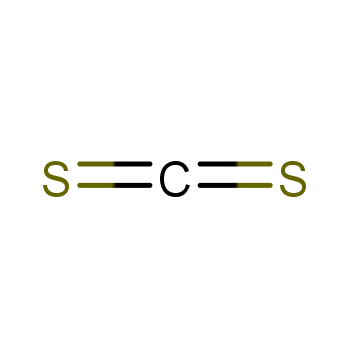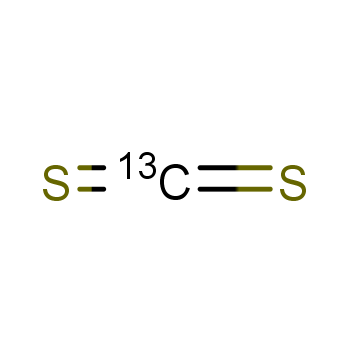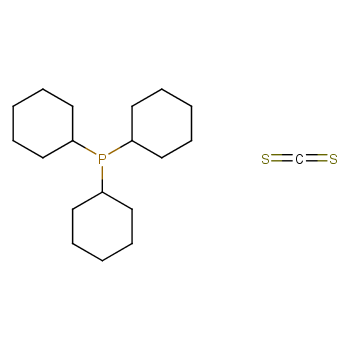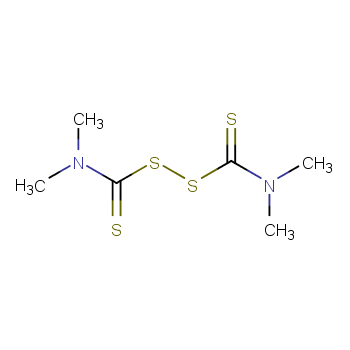 |
 |
Alcohol of sulfur Carbon bisulfuret Carbon bisulphide Carbon disulphide Carbon sulfide Carbon sulfide (CS2) Carbon sulphide carbonbisulfide,refined carbonbisulphide EINECS 200-843-6 MFCD00011321
Reported in EPA TSCA Inventory. EPA Genetic Toxicology Program. Community Right-To-Know List. EPA Extremely Hazardous Substances List.
Hazard Codes:?F,T
Risk Statements: 11-36/38-48/23-62-63-39/23/24/25-23/24/25?
R11:Highly flammable.?
R23/24/25:Toxic by inhalation, in contact with skin and if swallowed.?
R36/38:Irritating to eyes and skin.?
R48:Danger of serious damage to health by prolonged exposure.?
R62:Risk of impaired fertility.?
R63:Possible risk of harm to the unborn child.
Safety Statements: 16-33-36/37-45-7?
S7:Keep container tightly closed.?
S16:Keep away from sources of ignition.?
S33:Take precautionary measures against static discharges.?
S36/37:Wear suitable protective clothing and gloves.?
S45:In case of accident or if you feel unwell, seek medical advice immediately (show the label whenever possible.)
?Carbon disulphide , its cas register number is 75-15-0. At very high levels, carbon disulfide may be life-threatening because it affects the nervous system. Significant safety data come from the viscose rayon industry, where both carbon disulfide as well as small amounts of H2S may be present. A human poison by unspecified route. Human reproductive effects on spermatogenesis by inhalation. Experimental teratogenic and reproductive effects. The main toxic effect is on the central nervous system, acting as a narcotic and anesthetic in acute poisoning with death following from respiratory failure. Flammable liquid. A dangerous fire hazard when exposed to heat, flame, sparks, friction, or oxidizing materials. Severe explosion hazard when exposed to heat or flame. Ignition and potentially explosive reaction when heated in contact with rust or iron. Mixtures with sodium or potassium-sodium alloys are powerful, shock-sensitive explosives. Explodes on contact with permanganic acid. Potentially explosive reaction with nitrogen oxide, chlorine (catalyzed by iron). Reacts with metal azides to produce shock- and heat-sensitive, explosive metal azidodithioformates.
?Carbon disulphide (CAS NO.75-15-0) is hazardous, so the first aid measures and others should be known. Such as: When on the skin: first, should flush skin with plenty of water immediately for at least 15 minutes while removing contaminated clothing. Secondly, get medical aid. Or in the eyes: Flush eyes with plenty of water for at least 15 minutes, occasionally lifting the upper and lower eyelids. Then get medical aid soon. While, it's inhaled: Remove from exposure and move to fresh air immediately. Give artificial respiration while not breathing. When breathing is difficult, give oxygen. And as soon as to get medical aid. Then you have the ingesting of the product:?Do?not induce vomiting. If conscious and alert, rinse mouth and drink 2-4 cupfuls of milk or water, and get medical aid immediately. Notes to physician:?Effects may be delayed. Observe patient.
| 1. | ??? |
mmo-sat 100 μL/plate |
??? | NIOSH* ?? National Institute for Occupational Safety and Health, U.S. Dept. of Health, Education, and Welfare, Reports and Memoranda 5AUG77 . |
| 2. | ??? |
sce-hmn:lym 10,200?μg/L |
??? | BCTKAG ?? Bromatologia i Chemia Toksykologiczna. 14 (1981),115. |
| 3. | ??? |
ihl-hmn LCLo:4000?ppm/30M |
??? | 29ZWAE ?? Practical Toxicology of Plastics Lefaux, R.,Cleveland, OH.:?Chemical Rubber Company,1968,118. |
| 4. | ??? |
ihl-hmn LCLo:2000?ppm/5M |
??? | TABIA2 ?? Tabulae Biologicae. 3 (1933),231. |
| 5. | ??? |
unr-man LDLo:186?mg/kg |
??? | 85DCAI ?? Poisoning; Toxicology, Symptoms, Treatments. 2 (1970),73. |
| 6. | ??? |
orl-rat LD50:3188?mg/kg |
??? | GISAAA ?? Gigiena i Sanitariya. 31 (1)(1966),13. |
| 7. | ??? |
ihl-rat LC50:25?g/m3/2H |
??? | 85GMAT ?? Toxicometric Parameters of Industrial Toxic Chemicals Under Single Exposure Izmerov, N.F., et al.,Moscow, USSR.:?Centre of International Projects, GKNT,1982,32. |
| 8. | ??? |
orl-mus LD50:2780?mg/kg |
??? | GISAAA ?? Gigiena i Sanitariya. 31 (1)(1966),13. |
| 9. | ??? |
ihl-mus LC50:10?g/m3/2H |
??? | 85GMAT ?? Toxicometric Parameters of Industrial Toxic Chemicals Under Single Exposure Izmerov, N.F., et al.,Moscow, USSR.:?Centre of International Projects, GKNT,1982,32. GISAAA ?? Gigiena i Sanitar |
Flammable liquids, Category 2
Skin irritation, Category 2
Eye irritation, Category 2
Specific target organ toxicity \u2013 repeated exposure, Category 1
Reproductive toxicity, Category 2
| Pictogram(s) |    |
|---|---|
| Signal word | Danger |
| Hazard statement(s) | H225 Highly flammable liquid and vapour H315 Causes skin irritation H319 Causes serious eye irritation H372 Causes damage to organs through prolonged or repeated exposure H361fd |
| Precautionary statement(s) | |
| Prevention | P210 Keep away from heat, hot surfaces, sparks, open flames and other ignition sources. No smoking. P233 Keep container tightly closed. P240 Ground and bond container and receiving equipment. P241 Use explosion-proof [electrical/ventilating/lighting/...] equipment. P242 Use non-sparking tools. P243 Take action to prevent static discharges. P280 Wear protective gloves/protective clothing/eye protection/face protection. P264 Wash ... thoroughly after handling. P260 Do not breathe dust/fume/gas/mist/vapours/spray. P270 Do not eat, drink or smoke when using this product. P201 Obtain special instructions before use. P202 Do not handle until all safety precautions have been read and understood. |
| Response | P303+P361+P353 IF ON SKIN (or hair): Take off immediately all contaminated clothing. Rinse skin with water [or shower]. P370+P378 In case of fire: Use ... to extinguish. P302+P352 IF ON SKIN: Wash with plenty of water/... P321 Specific treatment (see ... on this label). P332+P313 If skin irritation occurs: Get medical advice/attention. P362+P364 Take off contaminated clothing and wash it before reuse. P305+P351+P338 IF IN EYES: Rinse cautiously with water for several minutes. Remove contact lenses, if present and easy to do. Continue rinsing. P337+P313 If eye irritation persists: Get medical advice/attention. P314 Get medical advice/attention if you feel unwell. P308+P313 IF exposed or concerned: Get medical advice/ attention. |
| Storage | P403+P235 Store in a well-ventilated place. Keep cool. P405 Store locked up. |
| Disposal | P501 Dispose of contents/container to ... |
none
 |
 |
Literatures:
Zhurnal Obshchei Khimii, , vol. 6, p. 852 Chem. Zentralbl., , vol. 108, # II p. 519  Yield: ~% |
 |

![CARBON DISULFIDE, [14C]](https://structimg.guidechem.com/2/26/554245.png) |
 |
 |
 |
 |